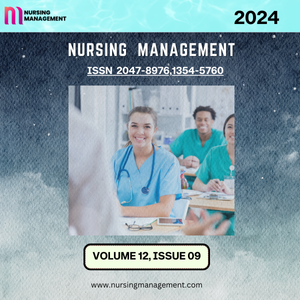Menu
Volume 11 Issue 10
A Modified Guideline for High-Fidelity Patient Simulation to Improve Student Satisfaction and Self-Confidence in Learning: A Mixed Study
Florence M. F. Wong andDavid C. N. Wong
1Nursing Department, Faculty of Healthcare Sciences, University of La Laguna, 38200 Santa Cruz de Tenerife, Spain
2Primary Care Management Board of Tenerife, The Canary Islands Health Service, 38003 Santa Cruz de Tenerife, Spain
3Nuestra Señora de Candelaria School of Nursing, 38010 Santa Cruz de Tenerife, Spain
4Health Services Management Board of La Palma, The Canary Islands Health Service, 38713 Breña Alta, Spain
Abstract
Diabetic retinopathy (DR) is one of the complications of diabetes mellitus (DM), with macular oedema being one of the leading causes of avoidable blindness among individuals with DM worldwide. Fundus screening is the only method for early detection and treatment. High-quality training programmes for professionals performing primary care screening are essential to produce high-quality images that facilitate accurate lesion identification. This is a two-phase observational, descriptive, and cross-sectional study. The first phase analysed DR knowledge in a sample of nurses. The second phase explored agreement on DR screening between referral ophthalmologists in image assessment (gold standard) and a small group of nurses involved in the previous phase. In phase 1, the agreement rate for screening results was 90%. In phase 2, the overall raw agreement on the screening of fundus photography results between nurses and ophthalmologists was 75% (Cohen’s kappa = 0.477; p < 0.001). Agreement on screening with ophthalmologists was moderate, suggesting that implementing a specific training programme for nurse-led imaging screening would help develop this competence among nurses, ensuring a good level of agreement and patient safety and adding value for users, and also for the sustainability of the healthcare system. This study was not registered.
Keywords:health knowledge; attitudes; practice; diabetic retinopathy; early diagnosis; nursing; primary health care
Editorial Board
Editor-In-Chief
Christopher J. Hayes, University of California, BerkeleyCalifornia
Associate Editors
David P. Williams, Johns Hopkins University
Sophia L. Brooks, University of Sydney
Arjun K. Mehta, University of Cambridge
Isabella S. Johnson, University of Toronto
Eli T. Garcia, University of Oxford
Grace M. Lewis, Stanford University
Mason R. Chen, University of Melbourne

